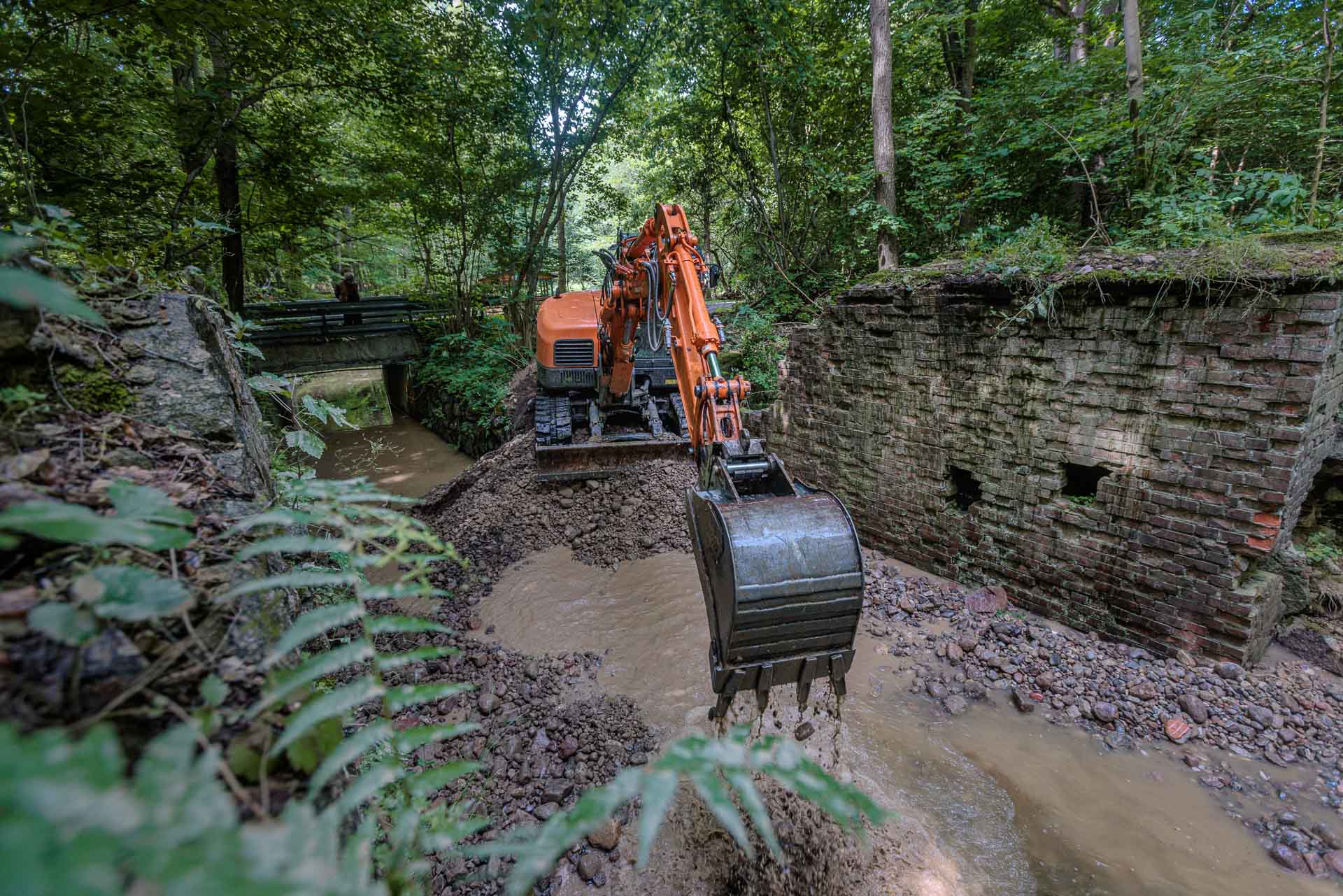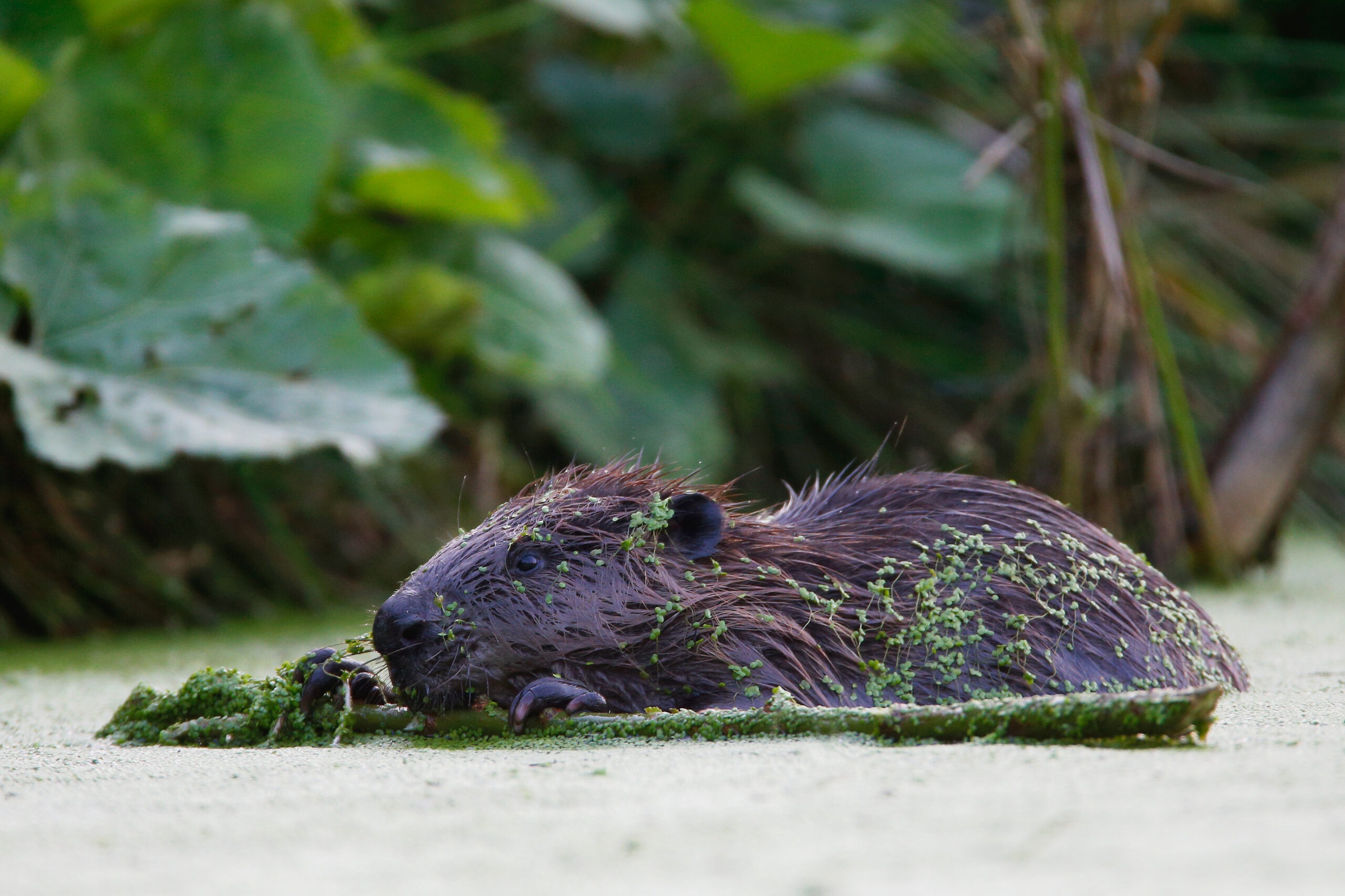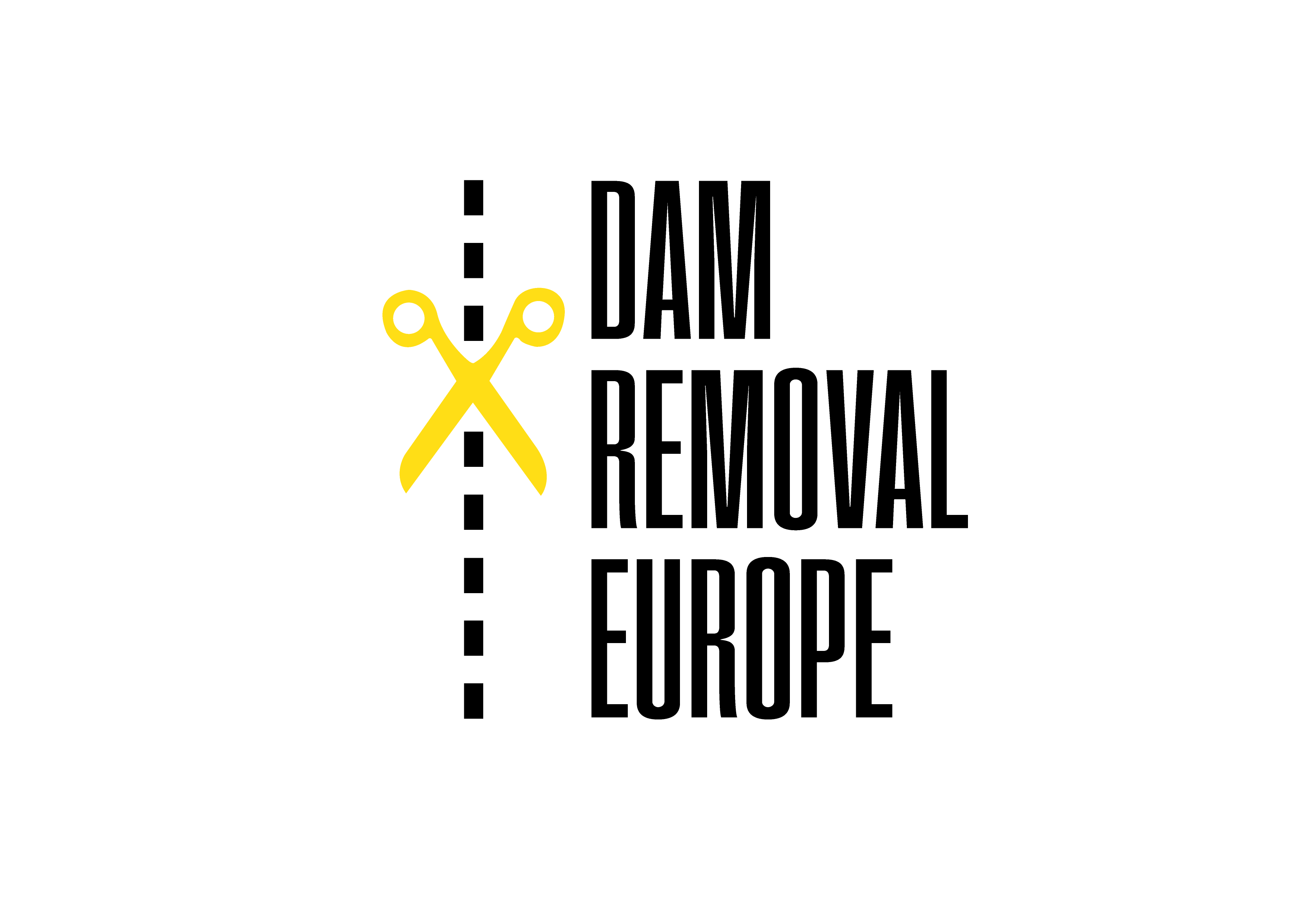The removal of dams and other barriers is one of the best ways to rewild rivers and enhance the benefits they deliver to people and nature. Rewilding Europe is liberating rivers in many of the landscapes where it operates, as part of its mission to realise a wilder continent.

Removing the remains of the dam in Bącznik, Poland, Rewilding Oder Delta
Towards wilder waters
Man’s desire to govern and harness nature means European waterways are choked with countless dams and other barriers. Many of these structures, some hundreds of years old, provide irrigation, energy, and other benefits. Many others are abandoned and obsolete. Regardless of their usefulness, the presence of these barriers has a hugely negative impact on fish, other wildlife, and people.
Rivers are rewilded by giving them the space and freedom to manage themselves, with dynamic, natural processes such as the free flow of water and flooding returning them to health. This means removing constraints such as dams and weirs wherever possible, as well as reconnecting rivers to their floodplains, restoring riverside vegetation, and promoting the return of wildlife such as beavers. Some rivers may need a helping hand at first, but many can heal themselves, often more quickly and effectively than we can.

The river Coiltie running through Urqhart Woods, Affric Highlands, UK
Practical showcases
The removal of dams has already proven to be one of the most efficient and cost-effective ways of restoring rivers, which is why Rewilding Europe and its partners are carrying out dam removal in a growing number of landscapes where we operate. As with all our practical efforts, we hope that by showcasing how rivers can be rewilded — and the benefits this delivers to both people and nature — we can inspire others to follow in our footsteps.
In the Nordic Taiga rewilding landscape in northern Sweden, for example, four dams were removed by the Rewilding Sweden team in 2024. The removal of these barriers — which were all located within the Vindelälven-Juhttátahkka Biosphere Reserve in the catchment of the Vindel River — have enhanced the connectivity of 84 kilometres of waterways, revitalising waterscapes and the wildlife populations they support. The team are currently removing five more dams in the same area.

Removal of dams and barriers on the Kogilnik River, Rewilding Ukraine
In the Danube Delta rewilding landscape — which is divided between Ukraine, Romania, and Moldova — the Rewilding Ukraine team are engaged in long-term efforts to renaturalise water flow and connectivity. The removal of dams and dykes is breathing new life into the delta and its communities, reversing hugely damaging hydro-engineering work that was carried out during the twentieth century.
Human intervention in the Oder Delta — a giant interconnected mosaic of rivers, lakes, wetlands, heathlands, and riparian forests on the border between Germany and Poland — has also left many waterways in poor ecological condition, with the free flow of water restricted by many artificial barriers. In the summer of 2024, the Rewilding Oder Delta team and partners removed two small dams in the catchment of the Ina River, on the Polish side of the delta. This has enhanced fish migration and reproduction along 20 kilometres of waterway and benefitted local communities, foresters, and farmers.

Unblocking the inactive weir in Bącznik, Rewilding Oder Delta
And in November 2024, the Rewilding Apennines team oversaw the removal of five barriers on the Giovenco River, which flows through the heart of the Central Apennines rewilding landscape in Italy. By enabling the free flow of water and increasing connectivity, these restoration efforts have improved habitat quality, boosted aquatic and riparian biodiversity, and enhanced the overall health of the river and surrounding landscape.

Rewilding rivers in Central Apennines, Italy, Rewilding Apennines
A growing movement
With climate change bringing new challenges, we urgently need a new relationship with water. These case studies illustrate how the European dam removal movement is continuing to gather pace, which is great news for the rivers and wetlands of Europe and the people and wildlife that depend on them. At Rewilding Europe we want to accelerate the scaling up of river rewilding across the continent — the removal of barriers will play a key role in this, demonstrating how nature can recover and thrive again when given the chance.
Learn more about river rewilding and join us as we work to set Europe’s rivers free.
Guest article prepared by Daniel Allen, Rewilding Europe



